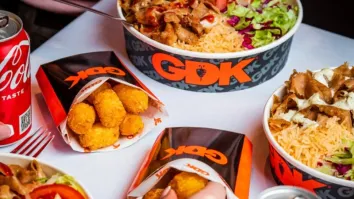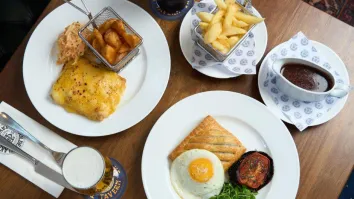
Foodservice inflation slows but remains higher than retail
A gap of 5% remains when compared to retail F&B prices.
New data from Meaningful Vision, analysing food price inflation trends across retail, dine-in restaurants, and food delivery sectors offers valuable insights for fast-food businesses.
Whilst menu price inflation in restaurants has finally shown signs of slowing down, reaching 7.6% in April 2024, a significant gap of around 5% remains when compared to retail food and beverage prices. This persistent gap highlights a key challenge: even with the evident slowdown, foodservice inflation significantly outpaces retail inflation, leaving operators in a challenging situation.
Inflation eases, but foodservice lags retail
Meaningful Vision’s research identifies a positive trend with menu price growth in foodservice steadily declining since December 2023, reaching 7.6% in April 2024, a 4% decrease over the previous four months. However, this data alone does not tell the whole story.
The Office for National Statistics (ONS) reports food and non-alcoholic beverage inflation at a significantly lower level of 2.9% for April. This translates to a persistent 5% gap between the price of food and beverages in retail vs foodservice. This gap has remained relatively constant over the past few months, indicating that the cost pressures felt by restaurants and cafes are not easing at the same pace as those experienced by grocery stores.
Delivery channels feel the pinch
The Meaningful Vision report reveals marked differences in inflation patterns across channels.
Whilst restaurants experienced a year-on-year price inflation rate of 6.8% in April, delivery platforms like Deliveroo, JustEat, and Uber Eats faced a marginally higher increase of 8.1%.
Interestingly, delivery platforms enjoyed a faster deceleration in inflation compared to restaurants with a 5% decrease, versus a 2% decrease in restaurants over the last five months. This trend is a reversal from the second half of 2023, when menu price inflation grew faster in the delivery sector.
The more rapid slowdown in inflation for delivery services has narrowed the gap between restaurant and delivery prices, which now stands at only 2 percentage points. This trend suggests a potential normalisation of inflation across these channels.
Food vs. beverages and price tiers
Food items continue to see slightly higher inflation compared to beverages. In April, food prices grew by 7% year-on-year, whilst beverage prices increased by 6%.
Additionally, cheaper menu items priced below £2 saw the highest inflation rate, at 9%. Conversely, items priced above £15 showed the lowest growth at only 4%. This suggests that budget-conscious consumers may be feeling the pinch more acutely as inflation disproportionately impacts cheaper options.
Inflation impact by menu category
Looking at specific categories, cold drinks, sandwiches, and snacks lead the pack with the highest price increases, 9-10% in April compared to the previous year. On the other hand, breakfast items (6%), savoury bakery products (5%), and pizza (3%) returned the slowest price growth.
"Whilst the overall trend of declining inflation is positive, the significant disparity between foodservice and retail prices on food and beverages remains a pressing challenge. Budget-conscious consumers are still feeling the pinch, as fast-food and restaurant prices remain higher than before and are seen as less affordable. Unlike retailers, restaurants face the additional pressure of rising costs and business rates, while simultaneously needing to manage consumer expectations for lower prices,” Meaningful Vision CEO, Maria Vanifatova, said
“This necessitates strategic price adjustments and menu optimization for operators seeking to maintain or even increase profitability. By understanding inflation trends across categories and channels, fast-food businesses can make informed decisions to navigate this dynamic environment and ensure long-term success. Value-oriented promotions and highlighting budget-friendly menu items can be particularly effective in attracting these cost-conscious consumers."


























